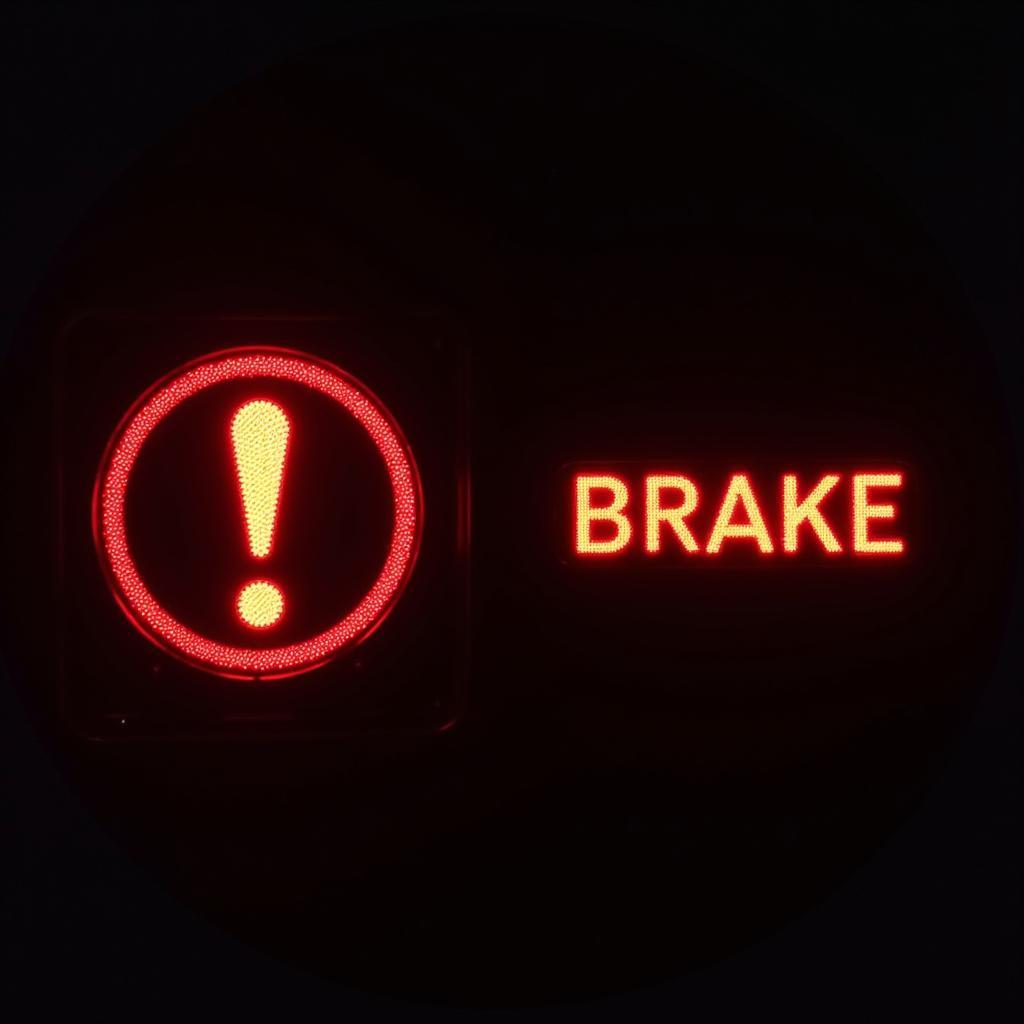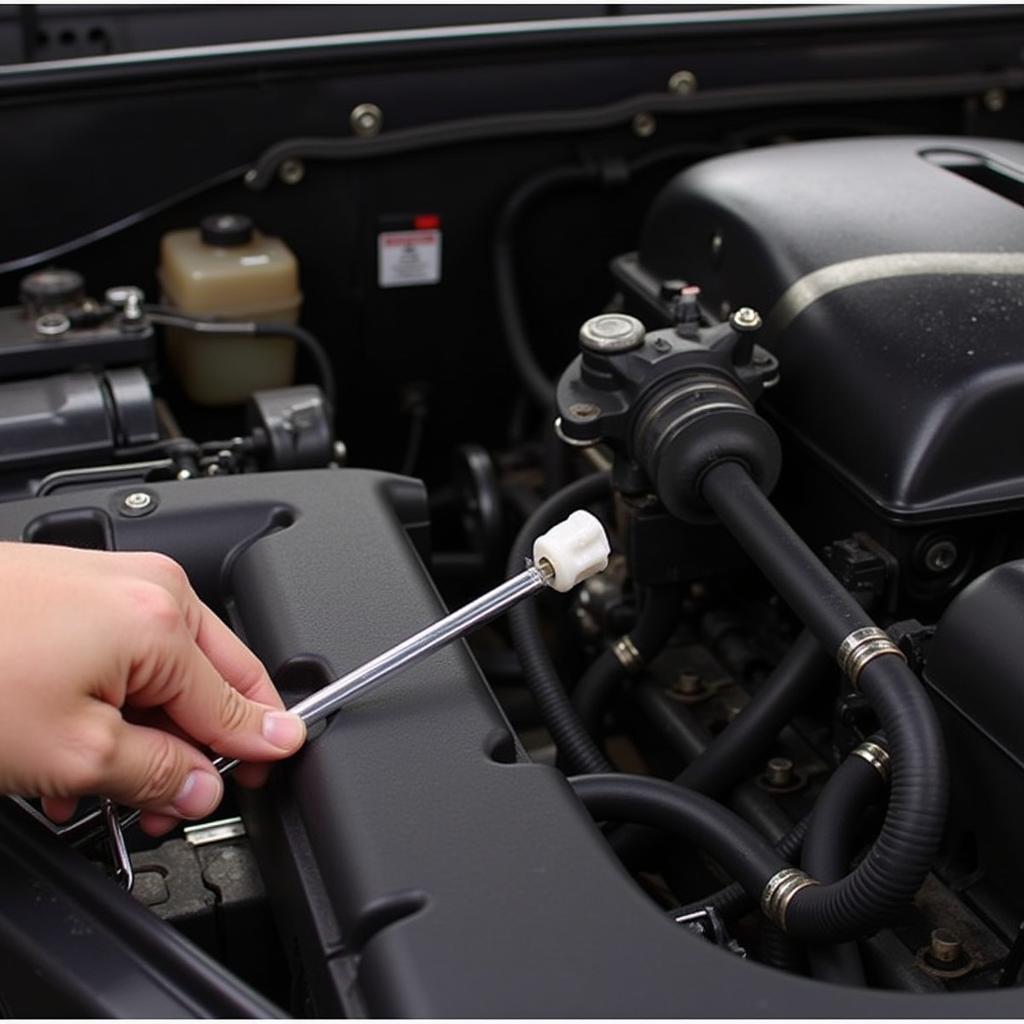You’re driving down the road, and suddenly a light pops up on your dashboard – the brake pad warning light. But what does it look like, and what should you do when you see it? This article will guide you through everything you need to know about the brake pad warning light.
Identifying the Brake Pad Warning Light
The brake pad warning light is designed to be noticeable, immediately grabbing your attention when illuminated. While the exact appearance may vary slightly depending on your car’s make and model, it generally takes one of two forms:
- An exclamation mark within a circle: This symbol typically appears in red or yellow, signifying caution.
- The word “BRAKE”: Some vehicles display the word “BRAKE” in bold letters, often in red, to clearly indicate a brake-related issue.
 Brake pad warning light symbols
Brake pad warning light symbols
Why is My Brake Pad Warning Light On?
The brake pad warning light is directly connected to your car’s brake pad wear sensors. These sensors are small metal tabs embedded within the brake pads themselves. As the brake pads wear down over time, the sensors eventually make contact with the brake rotor. This contact completes a circuit, triggering the warning light on your dashboard.
Here’s a simple breakdown:
- Worn Brake Pads: The most common reason for the warning light is worn brake pads.
- Worn Brake Sensor: In some cases, the sensor itself might be faulty or damaged, triggering the light prematurely.
- Low Brake Fluid: The brake pad warning light can also illuminate if the brake fluid level is critically low, often signaling a leak in the brake system.
- Electrical Issue: While less common, a malfunctioning sensor, wiring problem, or faulty dashboard light can also be the culprit.
What to Do When the Brake Pad Warning Light Comes On
Seeing the brake pad warning light shouldn’t be ignored. Here’s what you should do:
- Don’t Panic: While it’s crucial to address the issue promptly, there’s usually no need for immediate alarm.
- Assess Your Brakes: Pay attention to how your brakes feel. Are you experiencing any unusual noises, vibrations, or reduced braking performance?
- Check Your Brake Fluid: If possible, safely park your car and check the brake fluid level in the reservoir. If it’s low, there might be a leak.
- Schedule an Inspection: Whether you suspect worn brake pads, low fluid, or another issue, it’s crucial to schedule a professional inspection as soon as possible.
 Mechanic checking brake fluid level in a car
Mechanic checking brake fluid level in a car
The Importance of Timely Brake Pad Replacement
Ignoring the brake pad warning light can lead to:
- Reduced Braking Performance: Worn brake pads significantly reduce your car’s ability to stop effectively, increasing the risk of accidents.
- Damage to Rotors: Driving with worn pads can damage the brake rotors, leading to costly repairs.
- Brake Failure: In extreme cases, ignoring the warning light can lead to complete brake failure, putting you and others at serious risk.
How Often Should Brake Pads be Replaced?
Brake pad lifespan varies significantly depending on driving habits, vehicle type, and pad material. However, it’s generally recommended to have your brake pads inspected every 12,000 miles or at least once a year.
Can I Drive With the Brake Pad Warning Light On?
While you might be able to drive a short distance with the warning light on, it’s strongly advised against it. Driving with worn brake pads compromises your safety and can lead to further damage.
Professional Brake Repair and Remote Diagnostics
Modern automotive technology allows for remote diagnostics and software solutions to address various car problems, including brake-related issues. Specialized services can remotely diagnose the root cause of your brake pad warning light and provide guidance on the necessary repairs.
For instance, if you’re facing brake issues and need expert assistance, you can find reliable brake repair services, such as the best brake repair in Warner Robins, GA, to ensure your vehicle is in safe hands.
 Modern car diagnostics using computer software.
Modern car diagnostics using computer software.
Conclusion
The brake pad warning light is a crucial safety feature in your car. Understanding what it looks like and what to do when it illuminates can save you from costly repairs and potentially dangerous situations. Regular brake inspections and timely brake pad replacements are essential for maintaining optimal vehicle safety and performance. Don’t delay – prioritize your safety and address any brake concerns promptly.
